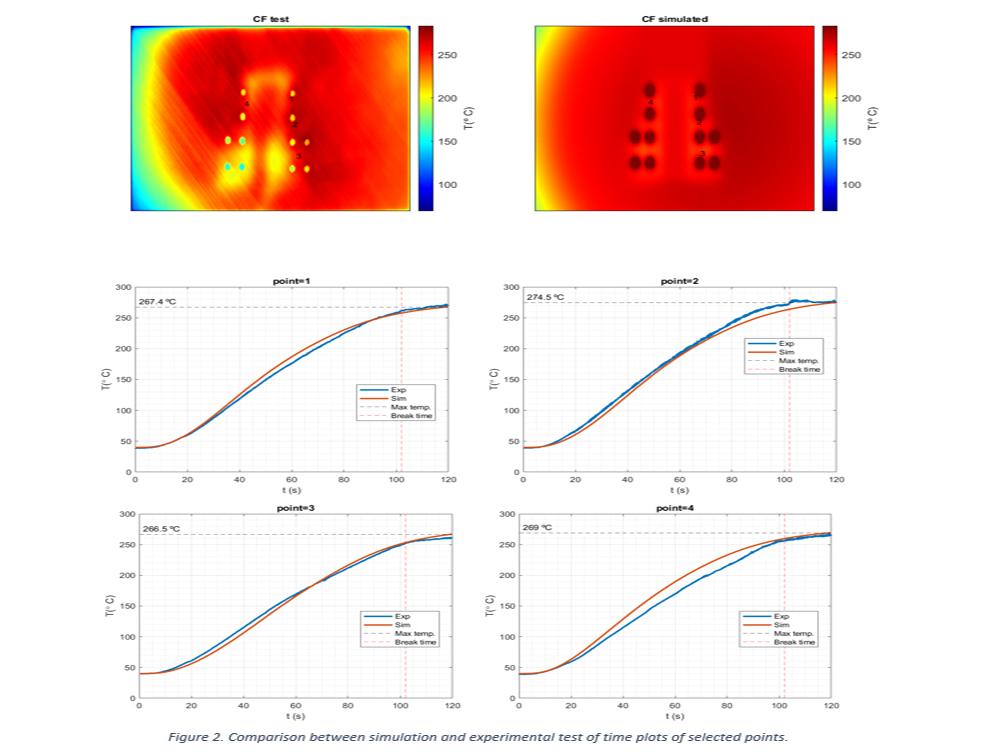A complete Thermal Model (TM) to virtualise the standard fire tests has been developed within the European HITCOMP Project
- Inicio
- Investigación y transferencia
- Grupos de investigación
- HITCOMP: High Temperature characterization and modelling of thermoplastic composites
- A complete Thermal Model (TM) to virtualise the standard fire tests has been developed within the European HITCOMP Project
A complete Thermal Model (TM) to virtualise the standard fire tests has been developed within the European HITCOMP Project
The LIR-UC3M has developed a complete Thermal Model (TM) to virtualise standard fire tests performed on thermoplastic composite specimens within the European HITCOMP Project. The TM is validated by comparing the time evolution of cold side temperature in both, experimental and simulated cases. The inputs to the model are the hot face temperature over time at each point, obtained from a flame model [1]. Other inputs are also included such as the thermal parameters [2] of the thermoplastic and the metallic fitting, room temperature, natural convection factor, air speed in convection, among others.
Representative fittings, used to achieve the final TM, are as similar as possible to the real ones used in aircrafts. As can be seen in Figure 1, these fittings have a large size compared to the simple fittings previously employed [3], therefore more fasteners (12 HiLoks) are needed to attach them properly to the specimen. Experimental tests were carried out by applying a mechanical load parallel to the specimen surface (Bearing) while controlled fire is applied under the ISO 2685 standard.
The main characteristics of the experimental setting are two IR cameras to measure simultaneously the time-temperature evolution of both sides of the specimen (see video). These IR cameras have been installed at Fire Lab facilities of AIRBUS permitting spatial co-registration and temperature evolution in both sides during fire and load tests. This procedure allows us to compare the temperature pixel by pixel on each side for the duration of the test.
Figure 2 illustrates the temperature maps and time plots of selected points from the regions of interest, as a comparison of simulation outputs with experimental data. On the rear (cool) side, the model is adjusted to be as accurate as possible to predict the behaviour of the composite at regions close to the HiLoks, key areas for the breakdown moment. From the results, we can confirm that TM works properly and is able to deal with fire tests involving representative fittings.
[1] Web news: A REALISTIC FLAME MODEL HAS BEEN SET UP THROUGH FINITE-ELEMENTS MODEL (FEM) SOFTWARE INSIDE HITCOMP EUROPEAN PROJECT
[2] Web news: A CHARACTERIZATION TEST HAS BEEN CARRIED OUT ON A COMPOSITE MATERIAL WITHIN THE FRAMEWORK OF THE HITCOMP PROJECT
[3] Web news: A NEW FIRE TEST IS PERFORMED ON A COMPOSITE MATERIAL IN THE FRAME OF THE HITCOMP PROJECT

